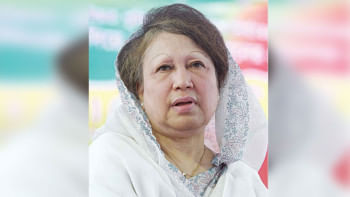Embracing period and puberty with Turning Red

After years of watching the likes of talking animals and scheming toys, I went in expecting something that centres the power of friendship and not much else. To my surprise, the simple story was a treasure trove of representation across race, gender and culture. The setting or characterisation of the film doesn't limit the relatability factor.
Turning Red follows 13-year-old Chinese-Canadian Mei Lee as she navigates life in Toronto in the early 2000s. Like any pubescent girl, her life revolves around school, friends, crushes, and boy bands. One day, her life changes forever as she wakes up as a giant red panda and subsequently discovers that the transformation is only triggered when she has an intense emotional response. She later learns this is hereditary for the women in her maternal family.
Mei is alarmed and embarrassed by the sudden change her body is undergoing and desperately tries hiding it from her family. Her mother, Ming Lee, mistakes her daughter's refusal to come out of the bathroom as the arrival of her first period and shows up with an arsenal of period products, attempting to have the uncomfortable but necessary conversation regarding menstruation – a universal experience.
This is a huge step forward not just for Pixar (20 of their 24 films feature a male protagonist), but for mainstream animation as it normalises female puberty for a wider audience. The above-mentioned scene alone encourages children to embrace the messy side of puberty, the emotional extremes and hormonal changes, something I didn't know how to do because the media portrays female growth with just sexualised glow-ups.
At this point, it becomes obvious that Mei's transformation to a red panda is essentially a metaphor for getting your first period, growing body hair, riding the emotional roller-coaster and being thrust into the awkward stage of puberty.
However, the film is also about a teen's complicated relationship with her mother. It incorporates generational trauma in a way that's much more relatable to not just Asians but to everyone who grew up feeling the weight of familial expectations.
The movie includes the very Asian trope of being the overachieving child but, instead of falling into any clichés, it explores the inner conflict of choosing whether to express one's individuality or keep moulding oneself according to their parents' expectations, something we deshi kids face daily.
Mei never complains about the pressures of being the perfect child. However, her sense of individuality threatens to rear its head every now and then, which leads to problems with her strict, traditional mother. The best part is, not once was it conveyed that Ming's love for her daughter was conditional. She had a fierce love for her family despite projecting her own trauma onto Mei.
Inside Out took a whimsical approach to teen angst. Encanto disguised generational trauma under a magical facade. With Turning Red, however, Pixar takes the coming-of-age arc giving it a realistic and personal makeover, refusing to succumb to the often dreamy media portrayal of growing up.
The result? An allegorical gem that masterfully captures the struggles of adolescence.
Mashiyat Nayeem is mourning the end of online school and the extra hour of sleep. Send her condolences at [email protected]

 For all latest news, follow The Daily Star's Google News channel.
For all latest news, follow The Daily Star's Google News channel. 








Comments